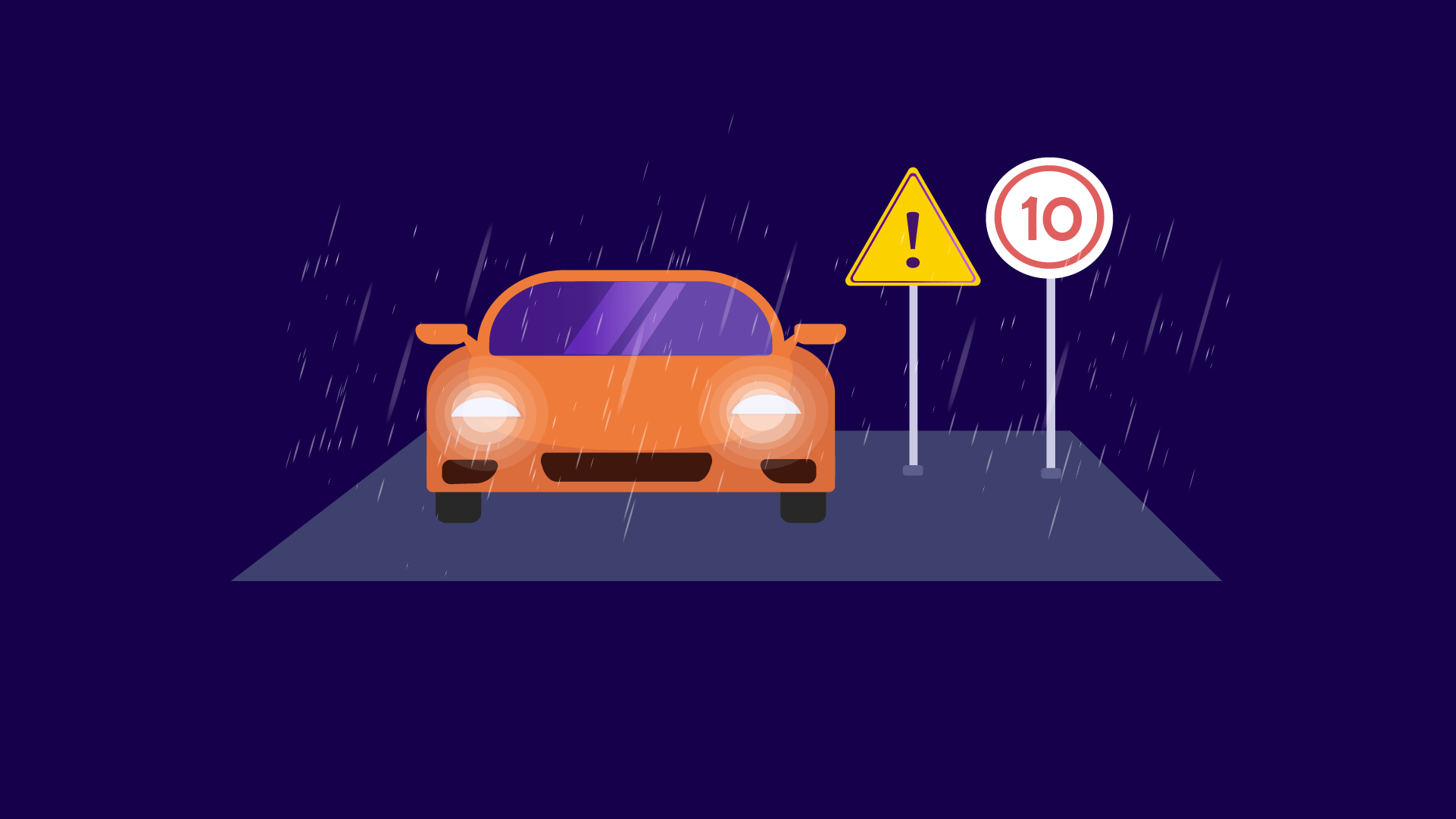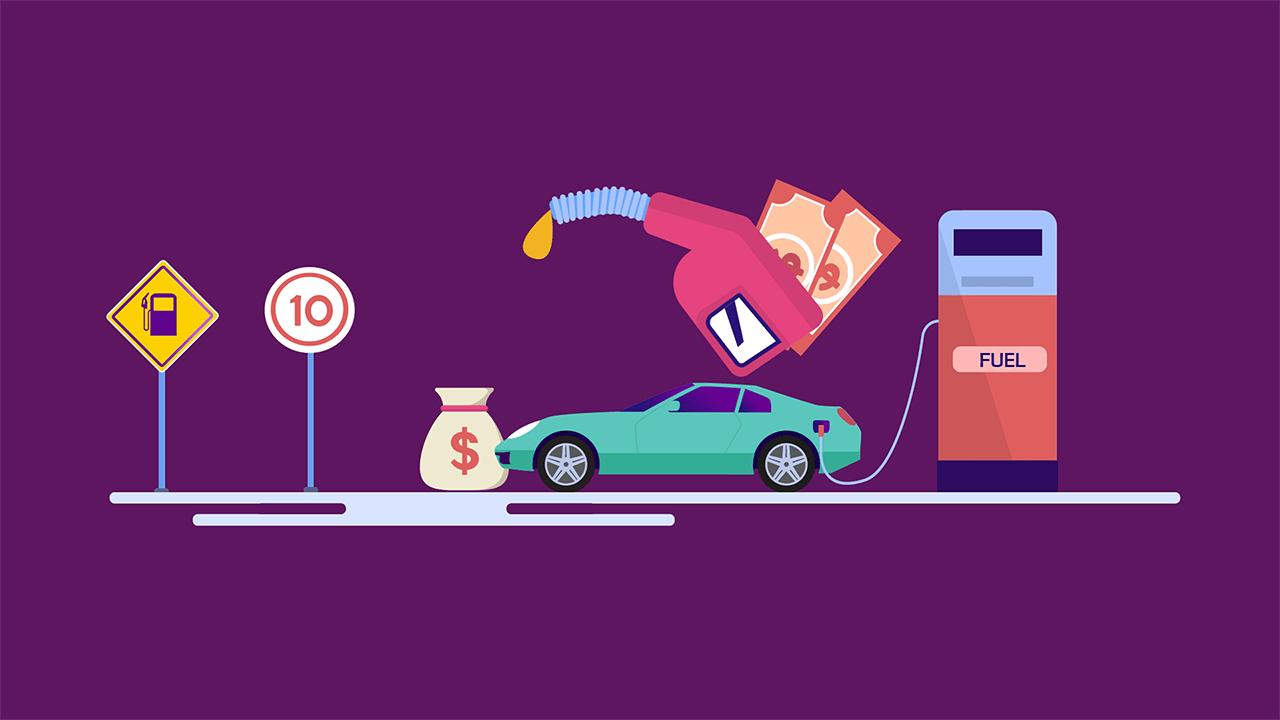Hydroplaning Explained: 9 Safety Tips To Keep Your Vehicle Under Control
By Ujala Nadeem on Mar 13, 2024
Content
- What is Hydroplaning Exactly?
- Situations in Which Hydroplaning Occurs
- How to Save Your Car from Hydroplaning
- Caught in a Skid? Here's How to Glide Back to Safety
- Wrapping Up
Stepping into the driver's seat? Brace yourself—there's plenty to learn. One of the most basic things is the concept of hydroplaning. It can be a real lifesaver when you're behind the wheel, particularly on rainy days.
Imagine you're driving smoothly, and suddenly, it's like your car's got ice skates on, gliding all over the place. That's hydroplaning for you – it's when your tires give up on the road and decide to take a swim. Steering? Good luck – it's like directing a floating board!
Now, why must you learn about this concept? Because getting the hang of hydroplaning means you can keep your car in check when the weather's throwing a tantrum.
So, it's important to understand how it happens, why it's risky, and how to stay in control.
What is Hydroplaning Exactly?
Hydroplaning or aquaplaning happens when your tires can't keep up with the water on the road. They start slipping and sliding instead of gripping the asphalt.
Think of it this way: Imagine your car deciding to go on a water slide adventure without asking you first. Steering and braking get tricky, almost like you're trying to navigate a boat with no oars. It tends to happen when it's raining cats and dogs, and the road looks more like a river, making your tires act like they're floating instead of rolling.
It could happen anywhere the road's slick enough to trap water under your wheels, like where puddles hang out after a rain. Highways are prime spots for this because of the high speeds involved.
Situations in Which Hydroplaning Occurs
Heavy Down Pour
When it pours heavily, the roads get really slick, and your car might start to slide like it's on ice. It's tough for your tires to stick to the road, and that's when driving gets a bit hairy.
Drizzle
Even a drizzle can get you slipping if your tires are smooth or not pumped up right. And yep, the faster you go, the more you're asking for trouble.
Standing Water
After the storm, watch out for those big puddles. Hitting one can make your car glide over the water, not the road. It's a surprise skate session you didn't sign up for!
High-Speed Driving
Zooming too fast in the rain is asking for trouble. Your tires can't keep up, and you might find yourself slipping and sliding without warning. Slow and steady wins the race here.
Worn Tires
Old tires with worn-out treads are no good in the rain. They can't grip the road well, so even a little water can make your car feel like it's on a slip 'n slide. Keep those tires fresh!
How to Save Your Car from Hydroplaning
-
Slow Down
When the skies open up, and the rain pours down, your first move should be to ease up on the gas pedal. Experts in road safety tell us that hydroplaning loves speed – anything above 35 mph is its playground. So, as soon as those first drops hit your windshield, consider it a sign to slow your roll. Driving just 5-10 mph under the speed limit, especially when the rain is coming down hard, or the wind is howling, can make a world of difference.
-
Follow Tire Tracks
Ever notice those wet tracks left by the car in front of you? They're not just there for show. Those tracks are like a guide through a watery obstacle course. The car ahead has kindly pushed some of the water aside, making it a safer bet for you to follow suit – where it's safe, of course.
-
Tire Rotation, Balance, and Bounce Back
Your car needs the right tread to keep its grip. Regular tire maintenance—we're talking rotation and balancing every 7-10,000 miles—is crucial. And while you're at it, make sure they're pumped up to the right pressure and have enough tread to channel water like a pro. Investing in quality tires designed for wet conditions is like giving your car an all-weather coat.
-
Headlights On
Rainy days can be gloomy, and not just for your mood but also for visibility. Flip on those headlights to cut through the dreariness for yourself and others. It's like saying, "Hey, I'm here, and I can see you," to everyone else on the road.
-
Keep it Manual
Cruise control is fantastic – until it's not. It's like trying to walk a tightrope with your hands tied in the rain. You want to be ready to react, and cruise control just puts an extra step between you and a quick response. Keep it manual, and stay in control.
-
Keep it Smooth
When the road is wet, think of your car as a delicate dance partner. No sudden moves. Sudden turns, stops, or hitting the gas can make your car lose its composure – and traction. Keep it smooth and steady.
-
Watch Out for Standing Water
Puddles might be fun for jumping in with boots, but they're a no-go for your car. These mini-lakes are prime spots for hydroplaning. If you can't avoid them, treat them like a sleeping baby – tiptoe through them, or in this case, drive super slowly.
-
Be Alert
Just like you'd watch for ice in the winter, keep an eye out for signs of hydroplaning – like if your steering feels a bit too light or your wheels start spinning. Stay vigilant, and you'll be better prepared to handle any slippery situations.
-
Avoid Hard Braking and Sharp Turns
When driving in wet conditions, try to anticipate stops and turns well in advance. This means avoiding hard braking and sharp turns. It can cause your tires to lose contact with the road surface. Apply the brakes gently and gradually, and take turns at a slower, more controlled speed. This will help ensure that your tires maintain traction and reduce the likelihood of hydroplaning.
Caught in a Skid? Here's How to Glide Back to Safety
-
Keep Your Cool
Panic is like an unwanted backseat driver. Ignore it. Stay calm, and you'll think clearer.
-
Ease Off the Gas
Don't stomp on the brakes; that's just asking for trouble. Instead, lift your foot gently from the gas and let your car naturally slow down.
-
Steer Lightly
Imagine you're handling a fragile antique. Steer gently in the direction you want to go, helping your tires find their way back to solid ground.
-
No Jerky Movements
Jerking the wheel or braking hard is like yelling "Boo!" at your tires – they'll just lose their grip even more. Keep everything smooth and gradual.
-
Practice Patience
Give your car a moment. It'll slow down, the tires will kiss the road again, and you'll feel it. That's your cue to gently steer back to safety.
-
Take a Breather if You Need It
If your heart's racing and you need a moment, find a safe spot to pull over. Take some deep breaths, and only hit the road again when you're good and ready.
Wrapping Up
Understanding hydroplaning is key to keeping you and your car safe. It's all about considering the situation of the road and weather and adjusting your driving accordingly to stay safe. After all, the other two are external factors, while your driving is a considerably controllable factor.
Let’s keep this simple: slow down when it's wet, keep your tires in good shape, and remember that sometimes, the best way to stay in control is to ease up on the gas and let your car do its thing. That way, you'll keep the rubber side down and the shiny side up. And well, that’s it from our side! Stay safe, stay informed, and keep those wheels firmly on the ground, come rain or shine.


